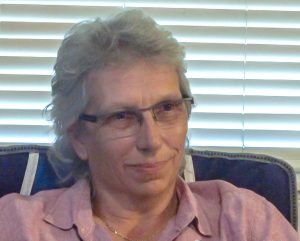by Nancy Christofferson
HUERFANO — Delcarbon camp no doubt had many distinctive features, a personality, as it were, but somehow, it “mutated”.
The Delcarbon post office, spelled just like that, as one word, was established November 15, 1915. In no time at all, that spelling was seen equally often as Delcarbon and Del Carbon, and sometimes even Del Carbo. Its northern neighbor, the Larimore mine, though it never had a post office, had the same problems hanging onto its identity, being referred to as the Larrnore, Larrimore, Laramie, Jackson and Beacon. What it did retain was as the northernmost location of the string of mines running to the northeast of Walsenburg, and there were a lot of them. Delcarbon was about a mile southeast of Larimore, in the location most usually identified as the Calumet #1. If this is confusing, it is natural, because it probably was confusing way-back-when as well.
Despite the new post office designation in 1915, and a few maps showing its location, there is no real history to it until 1927. One clue as to its existence is that Delcarbon was sited in School District #38 which was organized in 1907. The name was often spelled Del Carbon, even by its own school board. It had one teacher in 1909 but by 1913 boasted two, indicating the district, if not the camp, was growing. But, oh oh! In 1922 it was called the Sunnyside School. By 1933 it was again the Delcarbon. Well, that is, if it wasn’t being called Turner or Little Turner at the time. This name, too, is changeable, but the accepted theory is that Calumet #1 was called Turner, and Calumet #2 was Little Turner. As if that clears up the confusion.
The National Geological Survey, on its undated map spotlighting the inactive coal mines of the Front Range with locations and certain data about them, explains that Calumet #1 was operated from 1922 to 1933 and before that, as Turner from 1911 to 1921. Calumet #2 was operated under that name from 1924 to 1971, as the Brennan, 1918 to 1923; and as Delcarbon 1952 to 1961. Even this is misleading, but, oh well.
The Turner mine has an early history, sort of. It was opened and developed by one James Turner, though no one mentions the date. It is known Turner, a native of Scotland, came to Walsenburg in 1884. He sold his coal mine, age unknown, in 1927. His mines became known as “Big Turner and Little Turner at Delcarbon”. The new owner was the Utah Fuel Company.
A few early news items came out of Delcarbon camp. In January 1927 the item was “The bath house at the Utah Fuel Company’s Calumet #1 mine at Del Carbon burned down last night. Supt. James R. Cameron sets the damage at $300.” In December 1927, the PTA was making plans to buy playground equipment for the school.
Regarding the Turner, we can read that a new 40-room boardinghouse was almost complete in October 1917 and that in December it was robbed of $355. In 1930 it was revealed Camillo Battiste was the owner of said hostelry. One Joseph Powell was “somehow electrocuted” in the mine in January 1920, and in August 1927, Robert Turner was superintendent. The newspapers failed to help the name conundrum with printing “Calumet #2 is known as Little Turner” in 1930, and later, as “Old Turner”.
Assuming Turner was the first working mine of these, the newspaper carried its earliest remark about it in January 1916 when it carried the death notice of Fred Caddell, son of Ed, a noted miner and developer, which may indicate this was one of the many properties dubbed the Caddell mines. Fred, 22, an electrician, had been electrocuted by a coal cutter.
A second mention, even less helpful, comes in September 1916 by introducing one Mr. Zook as superintendent. Two months later we learn from the same source Mr. Zook had a daughter named Marvel. In August ’27. a Robert Turner was super.
We learn the Utah Fuel Company kept ownership for a number of years through several clues such as when James Cameron had to have his arm amputated in September 1924. At that time we are informed he was the cousin of Frank, the president of Utah Fuel.
As for Calumet, either #1 or #2, when the original opened and who owned or operated it, is up in the air. Two more notices came in 1920, proving the mine was, at least, working. These were the fatalities of Joseph Powell, who too had been electrocuted in January, and Pete Zubar, 26, killed in the mine somehow. Just two other deaths occurred in the ’20s in Turner, both of falls of rock. An Arthur Treasure, 48 years old and pit boss, was seriously injured in the Turner, or Calumet #2, the paper explains, in 1930. Arthur and several of his sons worked there but only the father died there, in 1943.
Most of these mines, by any name, were relatively small, with few amenities offered their employees. There were no clubhouses and only small markets and shops instead of the commodious company stores. Del Carbon/Calumet miners had to make do with just three pool halls, probably all of them serving at least beer, at least until Prohibition. There was one “Calumet Social Club” noted in 1932 when it sponsored a dance, an active Red Cross chapter sewing club somewhere about in 1941 when James Bainbridge was superintendent, and, after 1930, a championship soccer team.
Another event of 1927 was the fire that destroyed the Utah Fuel Company’s bath house at Del Carbon.
There were at least two longtime large families living in Turner and environs, the Friels and the Tice clan. The fathers and some of the sons were miners. The Friels, as explained by their daughter, Sister Edward Marie, were Irish immigrants who came to Huerfano County in 1925 or ’27 to visit his brother Ed and stayed on.
The other were Michael and Marie (Phillips) Friel, married in 1914 in Ireland and with children at the time of their arrival here though they continued to have a few more here. Of their eight children, one, Marie Frances, became a nun and one, James, a priest. The senior Friels celebrated their 50th anniversary before he died in 1976 and their offspring remained active in the church.
The Tices had five daughters and two sons, one of whom, S-Sgt. John Paul, was killed in 1942 with the First Engineers in Canada, and another, Helen Anna, who served with the WAVES.
Speaking of large families, in 1952 the owner of the Calumet, then Kaiser Steel Company, sold the property to the seven or eight Sudar brothers, George, John, Mike, Nick, Paul, Frank, Sam, and Martin who reopened the mine after it had been idle since the previous December. The mine had never employed too many at a time, but had maintained production with a skeleton force. For instance, in 1927, at its peak, Calumet #2 employed 82. In the 1950s, when most properties had closed, Calumet #2 was one of seven still in production. In September 1960, it was high producer (4,407 tons).
By January 1963, just five mines were still producing in Huerfano County. In January 1964, slightly less than 6,500 tons were shipped out of Huerfano County but by just three mines.
Coal mining was getting tougher and tougher, and it wasn’t just because of the danger or wages. Federal laws on the environment, on burning coal, on underground safety precautions and another measures, on condemnation of sanitary facilities (including the restrooms in company offices), on pollution and every other little thing, brought on closures, some permanent, some just until the situation was remedied. By 1970, when it was once again referred to as Del Carbon, the mine was still operating “despite new legislation”, as the paper called it. The previous year it had mined 14,000 tons with just 15 employees earning somewhere over $110,000 combined. In October 1970, the 13 employees produced 947 tons in 22 days. That same month, the mine was ordered closed by federal officers but Governor John Love opened it back up again.
In 1971 Huerfano was down to two working mines, Calumet #2 and Maitland. Since the Walsenburg power plant was dependent on coal, when it was threatened to close Calumet, the power plant faced a close-down. Nervous city council and utility boards got more nervous with the “what-ifs” and began negotiations with San Isabel Electric Association to convert power sources. And so the mines limped on.
By early 1972 Maitland indeed was the only operating coal property left. When it closed later that year, Huerfano County’s King Coal had been permanently dethroned.




